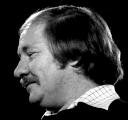|
Tip: Once you have the Examples on your screen you can toggle quickly between text and examples with Backspace or Shift+Backspace |
||||||||||||||||||||||||||||||||||||||||||||
|
Technical |
||||||||||||||||||||||||||||||||||||||||||||
|
||||||||||||||||||||||||||||||||||||||||||||
Open Harmony: Part 1 |
||||||||||||||||||||||||||||||||||||||||||||
|
Open harmony in wind instruments is used in slow to medium tempo numbers. Massive chordal voicings produce impressive dramatic backgrounds to unison melodic lines and solo instruments. Lower instruments may be in their extreme bass registers. Multitonal chords may be used with complex internal counterpoint. Tone colour may be widely varied. Up to a certain degree open harmony may be used in faster tempos if the lower tones do not skip to any great extent. Close harmony is tight, compact and agile and is used for fast passage writing in up-tempo numbers. Four-part harmony prevails, the chords of each wind section usually representing the basic harmony. Inner voices closely follow the movement of the lead voice, often in parallel. Instruments will be in their “grateful” registers, i.e. medium to upper, where they are most facile. Difficult keys will be avoided. A list of recommended keys follows at the bottom of this page: these are in concert pitch rather than transposed. The list is not complete: some trombone players like to play in D; most flautists abhor flat keys. An arranger showing a marked preference for the keys of B natural and E for his fast numbers deserves all that he gets. The overtone series influences the placing of tones in open harmony voicing. Generally speaking, maximum resonance is obtained by following the series when chord building; i.e. wider spacing in the lower register and closer spacing in the upper register. [Example 1] Partials 1, 3 and 5, and their inversions, are most resonant in the bass. When scoring for lower instruments the fifth (partial number 3) can often be omitted without disturbing the chord. Thirds and sevenths will predominate in the lower instruments. [Examples 2 & 3] The chord need not contain all tones for adequate representation. [Example 4] When adding four trumpets to four trombones the upper tones may be closed up, creating mild or sharp dissonances. [Example 5] The doubling of added tones can create tension. [Example 6] In cases where there are more instruments than available tones chordal 3rd 5th and 7th may be doubled freely. It is not advisable to double the chordal root in an upper voice unless extreme close harmony is being used (clusters). When writing for large wind ensembles the arranger should remember to double all important tones. This does not apply, however, to pedals, which can be adequately performed by either bass trombone or baritone sax. Writing the two in unison sometimes produces intonation problems. My experience has been that doubling the pedal tones an octave higher does not work satisfactorily enough, although an occasional double on the bass trombone an octave lower can be very effective. The melody in upper instruments can always be safely doubled in the octave. This is especially important when the first trumpet melody line crosses the upper leger line and the trombones become widely spaced. To avoid large gaps between the lowest trumpet and the highest trombone it is a good idea to double the first and fourth trumpets in the octave. [Example 7] Remember: we are talking here about open harmony. In close harmony the technique of doubling is handled differently. Don’t be afraid of using unisons to get around tricky harmonic passages. A sudden unison or two-part harmony (played by thirteen or more wind instruments) can give a surprising lift to a heavy densely scored piece of music. [Example 8] The example is taken from an arrangement by Billy Strayhorn of Lester Young's 'Frou Frou'.
|
||||||||||||||||||||||||||||||||||||||||||||
